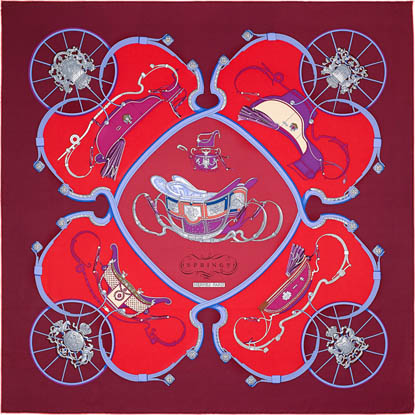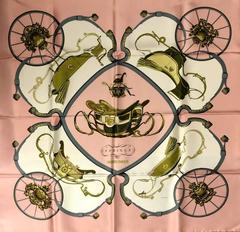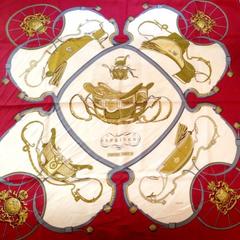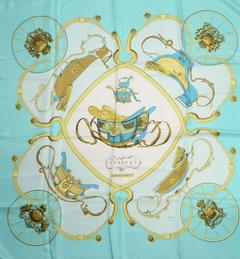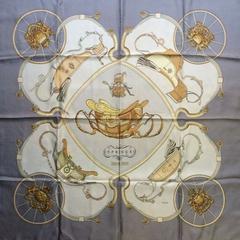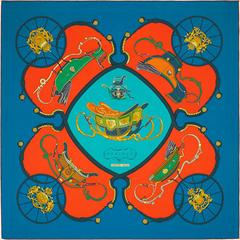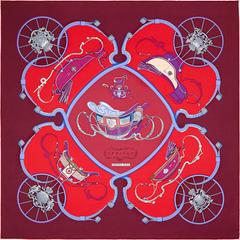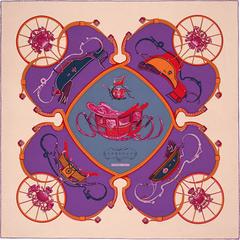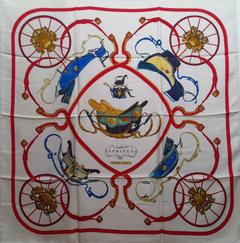Springs
Designed by Philippe Ledoux
First edition in 1974
Login or Register to get extra informations (rarity, sku, original prices ...)
Hermes silk twill scarf, hand-rolled, 36" x 36" (100% silk) Color : burgundy/red/myosotis
Inspired by an engraving conserved at the Chateau de Malmaison, this scarf by Philippe Ledoux, one of Hermes’ legendary designers, features in its center the phaeton belonging to Napoleon I’s son. This horse-drawn carriage takes its name from the son of Helios, the Greek sun god. Mythology relates that Phaeton took his father’s sun chariot and lost control of it, almost setting the earth on fire and then perishing in the process. The gorgeous little carriage was decked out with all the adornments of the Empire and was pulled by two merino sheep, which were trained by the famous circus manager Franconi. Built in 1812 by the carriage-maker Tremblay, it is preserved at the castle of Schönbrunn in Vienna, where the Emperor’s son lived for most of his short life.
Inspired by an engraving conserved at the Chateau de Malmaison, this scarf by Philippe Ledoux, one of Hermes’ legendary designers, features in its center the phaeton belonging to Napoleon I’s son. This horse-drawn carriage takes its name from the son of Helios, the Greek sun god. Mythology relates that Phaeton took his father’s sun chariot and lost control of it, almost setting the earth on fire and then perishing in the process. The gorgeous little carriage was decked out with all the adornments of the Empire and was pulled by two merino sheep, which were trained by the famous circus manager Franconi. Built in 1812 by the carriage-maker Tremblay, it is preserved at the castle of Schönbrunn in Vienna, where the Emperor’s son lived for most of his short life.
Help us enhance Scarf Sage Hermès scarf collection by contributing additional information or higher quality images.
